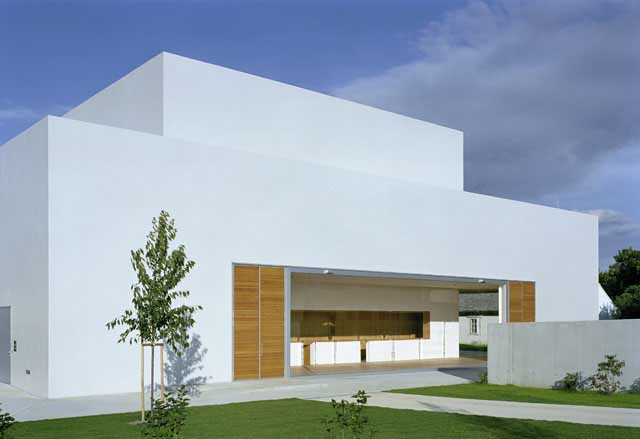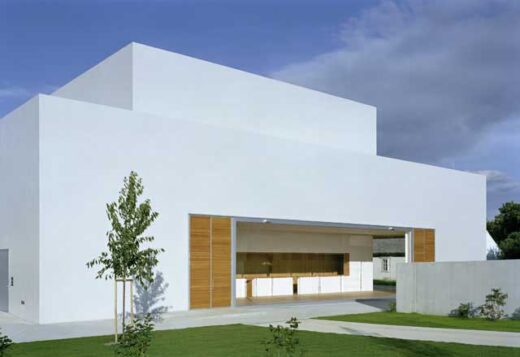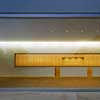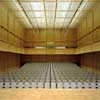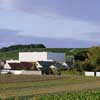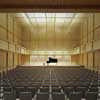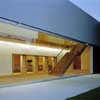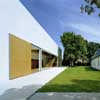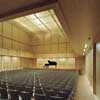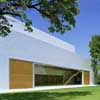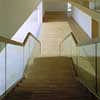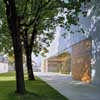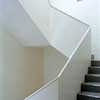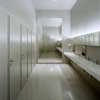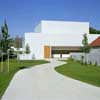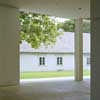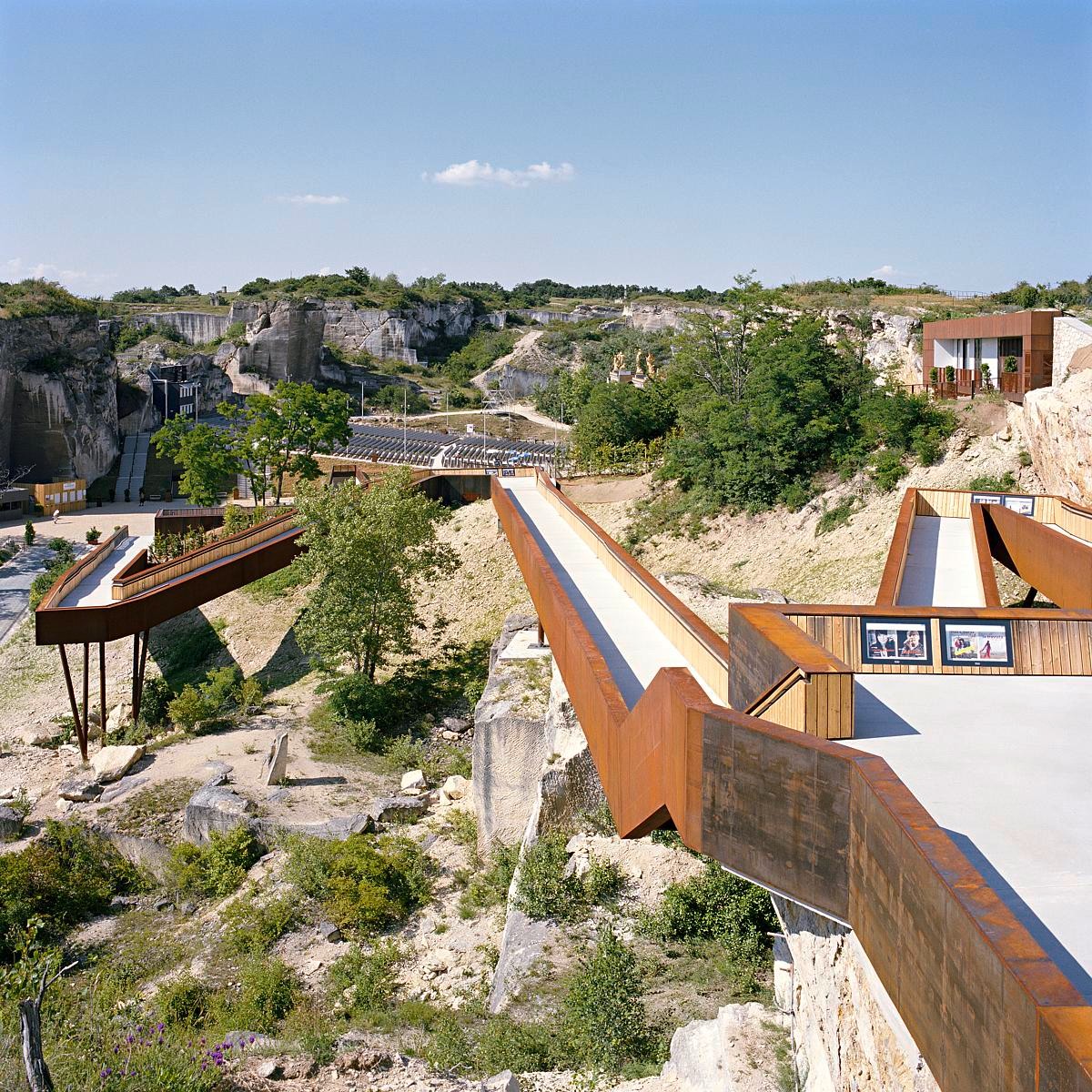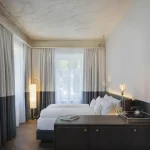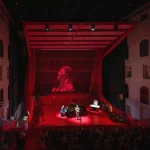Franz Liszt Concert Hall Austria, Raiding Building Project Photos, News, Design Images
Franz Liszt Concert Hall Raiding : Architecture
Building Development design by Atelier Kempe Thill in Austria, Europe
26 Aug 2009
Location: Raiding, Austria
Design: Atelier Kempe Thill
Concert hall in an Austrian village
Photos © Ulrich Schwarz
Franz Liszt Concert Hall
Raiding is a village with 900 inhabitants 80km south of Vienna. Situated close to the Hungarian border it is the place of birth of the composer Franz Liszt. His house of birth now a museum is one of the memorials of his work in Europe.
To promote his heritage in his native country Austria a new chamber music hall is built close to his birth house to be able to organise bigger music events. By doing so an international Liszt centre will be created. At the same time the poor region of Burgenland gets a new cultural institution.
The project is the result of an open international competition held in 2004. The question of the competition was to give an answer on the delicate question of how to integrate a traditional urban and bourgeois building program like a concert hall into a rural condition of a village. Further there was to give an answer on how to deal with the limited budget, the extremely limited planning time (just 4 months) and the difficult conditions of the building site. The resulting project tries to find a prototypical answer on these questions and is formed by the intention to achieve with a minimum of architectural means a maximum of spatial quality.
The specific within the ordinary – building in a village context
The buildings in Raiding are mostly simple and descent structures with an austere character.
The facades are often – like at the birth house – white and have just windows at the ground floor. Living on the country site is dominated by a close relationship between house and garden.
Point of departure for the design is these found normality that forms the identity of the Burgenland. The new concert hall forces not a break with the surrounding but tries to extend the existing spatial context. Like the surrounding structures the charm of the new house is based on it’s austere character.
The concert hall is enclosed by white walls and has just windows at the ground floor. The difference to the surrounding buildings is not based on the proportional configuration but on the absolute dimensions. Just because of it’s pure scale the building gets a descent and noble monumental aura.
This effect is reinforced by the treatment of the façade. The design accepts the outside-insulation-façade-system that is typical for that region as an economical and esthetical condition of the project. Just by adding a layer of sprayed polyurethane on the plaster the façade system is improved.
A smooth and slightly mirroring surface is created that is also resistant against rainwater. By doing so a façade detailing is possible without special corner detailing and the building system for wall and roof becomes in fact the same. The house appears therefore more abstract than the surrounding buildings – the banality of the context is improved and a future potential for the architecture of this region is demonstrated.
Landscape as panorama – the building as a “perception machine”
A very interesting phenomenon forms the fact that the building site is in the middle of a small park. The park is enclosed by a wall and the site is almost not visible from the village. The ambition of the design is to maintain this intimate atmosphere of the park and to realize an organic relation between the interior of the new house and the surrounding landscape.
The public foyer is hereby the spatial key element. All functions are put together in a two-storeyed volume that encloses the music hall. Inside the space is dominated by white walls and a wooden floor. Towards the park the façade is dramatically opened on all sides by 18m respectively 13m long and 4m high windows that are symmetrically positioned in the façade.
To avoid normally necessary subdivisions of the windows acrylic is chosen instead of glass.
The windows are made out of one piece in the factory, are just fit in place at the building site and polished. Because of the enormous size of the windows the relation between park and the inside is extremely direct. The perception of the landscape from out the foyer is extremely intensified – the landscape appears as a panorama and this is even strengthened by the hermetic character of the acrylic wall. The Franz Liszt birth house is presented on a grass plinth to the visitors and appears like an icon.
Next to the windows wooden doors are positioned. On the side of the birth houses these doors have with 4x4m exceptionally dimensions. As elements they offer the possibility to open the foyer towards the outside and invite visitors to enjoy the park. By doing so the park itself is becoming the foyer and will be a part of the concert hall.
Wooden hall – concert hall as an architectural sound box
Since the beginning of the modernist period, the concert house has been in a crisis. 18th and 19th century halls conformed to a system of proportions with architecture shaping room acoustics. During the past century, this system was abandoned. Architects designed free and organic spaces whose acoustic properties had to be “tackled” after the event by engineers by means of supplementary elements. This led to a somewhat technical and additive effect which sacrificed a hall’s integrated character. That’s often the reason why musicians and visitors do not like the modern halls.
The concert hall in Raiding is an attempt to achieve a synthetic, integrated space. The design reverts to the classical proportional system of the concert hall as a “shoe box”. The space is formed by a laminated timber construction. The beams form a grid of a maximum 2,6 x 3,6m. Wall and ceiling are treated the same way. This structure offers already good basis conditions for the acoustics. In a height of 4m there is a continuous balcony around the hall. The balcony offers good view conditions, is perfect for the acoustics and underlines the collective character of the concert event.
The grid of the construction is filled with a multilayer wooden plate of spruce wood. To achieve the wished resonance the plates are with up to 350kg per piece exceptionally heavy (40kg/m2). To avoid echo between the walls and to distribute sound in the space the plates are three-dimensional curved. By the use of a CNC – moulding cutter the first layer of the plate is curved, the total plate varies in depth between 12cm in the middle and 8cm at the edge.
The concert hall has a double floor with a top layer from oak wood. The top layer is perforated and the space in between the floor is used as a plenum to ventilate the hall with overpressure.
The used air is sucked off by small gaps in the ceiling.
Franz Liszt Concert Hall Raiding – Building Information
Title: Franz Liszt Konzerthaus Raiding
Facts:
Site: Raiding / Region Burgenland / Austria
Location: 80km south of Vienna, close to the Hungarian border
Address: Franz Liszt Konzerthaus, Franz Liszt Straße 48, 7321 Raiding
Architects: Atelier Kempe Thill architects and planners, Rotterdam, Netherlands
in cooperation with:
Brands United / Grabner Ziviltechniker KEG für Architektur, Graz, Austria
Client: Franz-Liszt-Gesellschaft Burgenland, Schloss Esterhazy, 7000 Eisenstadt
Austria
Process:
Competition: fall 2004, 2th prize
Commission: mar 2005
Planning process: mar 2005 – aug 2005 (6 months)
Building process: sep 2005 – aug 2006
Official opening concert: 15 oct 2006
Building:
Site area: 4.700m2
Building size: 2.194m2
Building height: main volume 8m, concert hall 12,5m
Building volume: 12.376 m3
Total building budget: € 5,55 mio. (excl. VAT)
– incl. all technical installations, complete landscape design, furniture & equipment
Team:
Team competition
Architect: Atelier Kempe Thill architect and planners, Rotterdam (NL)
Team architect: Andre Kempe, Oliver Thill, Frank Verzijden, Takashi Nakamura
Acoustic engineers: Peutz, Zoetermeer (NL)
Team planning and realisation:
Architect: Atelier Kempe Thill architect and planners, Rotterdam (NL)
in collaboration with Brands United / Grabner Ziviltechniker KEG für Architektur, Graz (AT)
Team Atelier Kempe Thill: Andre Kempe, Oliver Thill, Saskia Hermanek with
Sebastian Heinemeyer, Cornelia Sailer, David van Eck, Andre Boucsein, Takashi Nakamura, Kingman Brewster
Team Brands United / Grabner ZT KEG: Hans Grabner, Mark Blaschitz, Bernhard Kargl, Wolfgang Schmied
Representative of the client: SET, Wien (AT)
Consultants:
Quantity Surveyor: Prof. Mertes, Stuttgart (DE)
Structural Engineer: Vasko Woschitz Engineering, Eisenstadt (AT)
Service Engineer Electrical Installations: Die Haustechniker, Jennersdorf (AT)
Service Engineer Climate Installations: Technisches Büro Strommer,Schattendorf (AT)
Building Physics: Bölcskey + Scherpke, Wien (AT)
Light Concept: Conceptlicht, Mils (AT)
Acoustic Engineer: Müller-BBM, Planegg (DE)
Supervision Building Site: Woschitz Engineering, Eisenstadt (AT)
General Contractor: ARGE Alpine Mayreder Bau GmbH, Eisenstadt /
Pfnier + Co. GmbH, Oberpullendorf(AT)
Awards: Burgenländischer Architekturpreis 2008 / AT
Detail Award 2009 – category acoestics / DE
Photographer/ Copyright holder: Architektur-Fotografie Ulrich Schwarz
Ulrich Schwarz, Kreuzbergstrasse 27-28, D-10965 Berlin Tel. +49-(0)30-4278708
Franz Liszt Concert Hall images / information from Atelier Kempe Thill
Location: Raiding,Austria, central Europe
Austrian Building Designs
Austrian Architecture Designs – architectural selection below:
Vienna Architecture Walking Tours by e-architect
Austria Architect : Studio Listings
BEL & MAIN
Design: Delugan Meissl Associated Architects
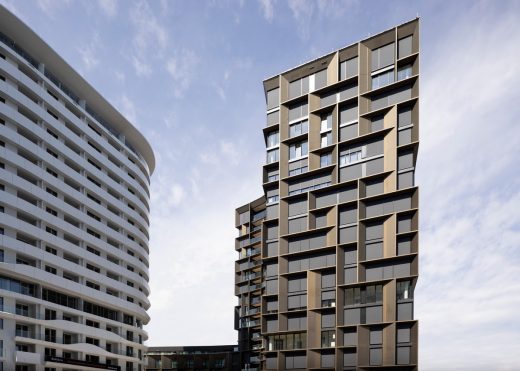
photo : Paul Kranzler
BEL & MAIN Vienna
Library and seminar centre at BOKU, Gregor-Mendel-Straße 33, 1180 Wien, Austria
Design: SWAP Architekten with DELTA
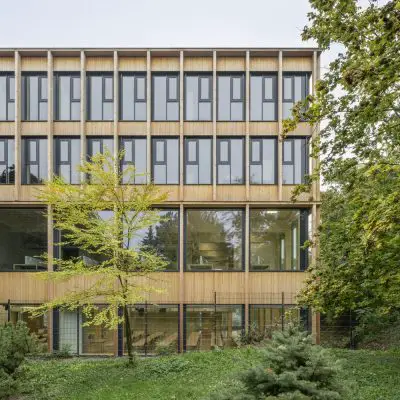
photograph © Hertha Hurnaus
Library and seminar centre at BOKU
Comments / photos for the Franz Liszt Concert Hall Austria Architecture design by Atelier Kempe Thill page welcome

